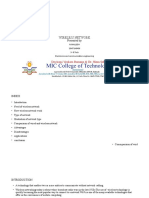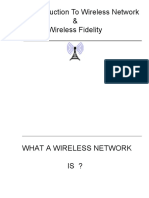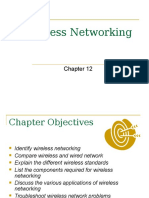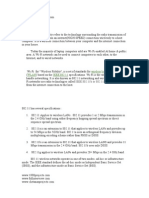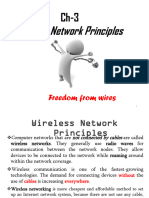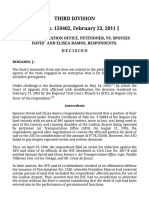0% found this document useful (0 votes)
13 views30 pagesCN Assignment
A wireless network is a computer network that uses wireless data connections, commonly found in homes, offices, and public spaces. It includes various types such as WLAN, WWAN, and WPAN, and requires specific hardware and configurations for setup. While offering advantages like mobility and ease of installation, wireless networks also face challenges such as interference and security risks.
Uploaded by
nanyonjoshalomritah20Copyright
© © All Rights Reserved
We take content rights seriously. If you suspect this is your content, claim it here.
Available Formats
Download as PPTX, PDF, TXT or read online on Scribd
0% found this document useful (0 votes)
13 views30 pagesCN Assignment
A wireless network is a computer network that uses wireless data connections, commonly found in homes, offices, and public spaces. It includes various types such as WLAN, WWAN, and WPAN, and requires specific hardware and configurations for setup. While offering advantages like mobility and ease of installation, wireless networks also face challenges such as interference and security risks.
Uploaded by
nanyonjoshalomritah20Copyright
© © All Rights Reserved
We take content rights seriously. If you suspect this is your content, claim it here.
Available Formats
Download as PPTX, PDF, TXT or read online on Scribd
/ 30



